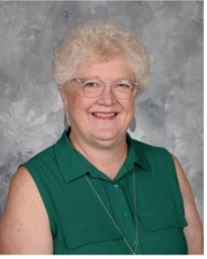Well, it’s happened, and like many changes in life, I did not see it coming. After 37 years in education, school has started, and I am not teaching. When I accepted the newly-created position of curriculum director at our school, it was understood that I would need to teach 50% of the time for the sake of the budget. Five years in and it appears my teaching days are over. I was pretty lost the first week. Would I have enough to do in the office full time? Would I gain weight due to the prevalence of donuts and too much sitting? Would I lose touch with the students? I honestly don’t know if this transition happened intentionally due to an admin decision, or because our school has grown significantly and we have plenty of teachers to cover the teaching.
For me, the change has required a lot of prayer, trust in an all-knowing God, and a good book – Necessary Endings, by Dr. Henry Cloud. In graduate school, a professor would often tell me that with a degree in curriculum my influence would widen from students in a classroom to a whole school of teachers who each have classrooms. I get that now, and I try to maximize that opportunity by using my natural tendency to be a fixer. When someone cannot log on to an assessment website, when the third grade needs a set of Bibles, when a new student lost the last extra copy of a workbook, when a senior needs to finish an online credit recovery course, when a cordless drill and an extra set of hands are required to assemble a ping pong table, I come to the rescue. (I truly did help assemble a ping pong table this week.) The quicker I can facilitate a solution, the better our teachers can do their jobs with joy and contentment.
In addition to helping teachers, I am determined to remain actively involved in the lives of our students. I believe this engagement is an important aspect of the job for every curriculum director. We must not lose touch with the ones who give purpose to our job. Without students, we have no need of curriculum. As an example, I am launching a reading initiative in grades 7-12, which involves incentivizing the reading of library books during study halls. I gathered a subset of our student council, fed them pizza, and asked for their input on how to make the program appealing. It was a great meeting, and they shared ideas I would never have considered otherwise. Another example of how I’ve engaged with students is when I volunteered to substitute in AP English. I have read the book they just started, so I could launch an impromptu lesson that saved them from doing a worksheet. I enjoyed getting to know this year’s AP students and sharing a book talk with them.
Another way to remain connected to students is through leading a club. We have an “Opportunity Period” once a week, and I teach sewing. Last year the group made several projects including aprons for Mother’s Day. What the extra planning and purchasing added to my workday was more than recouped by the precious relationship-building that occurred while spending time with students. Even extra duties, the bane of busy teachers, can be meaningful for the curriculum director. I help serve breakfast every morning. It is prepackaged food, but there are federally mandated procedures that must be followed. I get to greet the little cuties in our elementary and make sure they don’t pass up a piece of fruit and a milk. I am learning many of their names which is something that would not happen from an office chair.
Of course, there are times when I interact with students because they visit my office for help; however, I do not want those brief and sporadic encounters to be my only contact with them. My love of teaching is as strong today as it was my first year, and that love is wrapped up in the joy, challenges, and never-ending surprises associated with working with young people. Since they are no longer coming to my classroom, I must go to them. Let’s face it: analyzing testing data to prepare a board report can make you sleepy. Instead of seeking an extra cup of coffee, I can choose to take a break and seek some students. I usually don’t have to go far; in a few feet I can be at the lockers or in a classroom.
There is no chance I will miss lesson planning…ever. It was my least favorite teacher task. I may eventually enjoy a less frantic pace in my work life because I am not juggling two jobs. (Note: That has not happened yet!) Still only weeks into this new experience, I am quite confident that I have not fully realized the ramifications of not teaching this year. One thing I do know: I will continue to seek ways to spend time with students. They are the lifeblood of the school, and they make my life fuller, more satisfying, and more adventurous every day.




